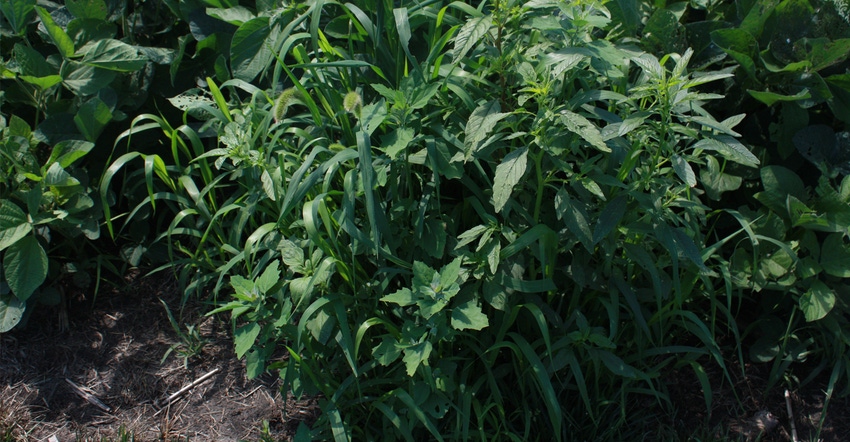September 21, 2017

When corn and soybean growers come up against prolific seed producers like waterhemp and Palmer amaranth, they may feel defenseless in their fight against weeds. But agronomists are encouraging growers to arm themselves with effective tools and knowledge for managing these yield-robbing weeds to prevent issues next season and for years to come.
“This year we had heavy waterhemp pressure at the Traer and Slater Syngenta Grow More Experience sites, and in my conversations with Iowa growers, waterhemp has been a major problem all across the state,” says Dean Grossnickle, Syngenta agronomist. “While waterhemp is very challenging to control, I know it’s not impossible to control if growers plan early and have a strong weed management defense.”
Grossnickle began his career working on herbicide efficacy trials and regulated field trials, as well as screening weeds for herbicide resistance and working in retail agriculture for eight years. Here are four key pieces of advice he offers growers as they are thinking ahead to next season:
1. Use full herbicide rates
Applying pre- and postemergence herbicides at full, labeled rates and at the correct growth stage leads to more effective control. Using application rates lower than recommended can lead to reduced control of weeds and possibly to resistance, which would be an even bigger issue for growers.
Iowa State University also warns growers about applying lower rates. Agronomists say lower commodity prices may tempt growers to allow some weed escapes in their fields. However, small weed escapes this year may lead to building the weed seed bank in the soil, meaning more issues in the future with more weed resistance.
2. Strategic herbicide timing
Something Grossnickle says he’s seen growers struggle with is their application timing. An effective weed management program depends heavily on well-timed herbicide applications in addition to cultural practices. Failing to apply a herbicide at the right time could result in wasted input costs, weed infestations and reduced yield.
“A common mistake is that growers wait for ‘all’ the weeds to emerge before they apply herbicides, which can be a costly decision,” he explains. “Herbicide applications must happen before the weed is 4 inches tall or the possibility of control reduces dramatically. The earlier the timing, the better control you will see throughout the growing season.”
3. Make more than one pass using more than one mode of action
Two is better than one, especially when it comes to herbicide applications. Just make sure you’re using multiple, effective modes of action.
According to Grossnickle, “It’s easy to see the benefits of a two-pass system when all of the trial results are right in front of you. At the Traer site, Acuron herbicide followed by Halex GT herbicide in glyphosate-tolerant corn had visibly fewer weeds in mid-July than corn with a one-pass system. This was the same story for our soybean herbicide trial, as well. Boundary 6.5 EC herbicide followed by Prefix plus glyphosate herbicide in glyphosate-tolerant soybeans outperformed the soybean trials with only one pass.”
Grossnickle reinforces the need for multiple effective modes of action. “When you’ve got a product like Acuron, you are using three modes of action and four active ingredients,” he notes. “These modes of action are apparent when you’re seeing more consistent control of tough weeds, including control of weeds that are more resistant.”
4. Seek out right hybrids and varieties for your fields
“Look for seeds with strong vigor and emergence ratings, like NK Corn and Soybeans,” Grossnickle adds. “Strong emergence equals a stronger crop canopy early. That crop canopy plays a huge role in the suppression of weeds and weed growth.”
To learn more about the Iowa Grow More Experience sites, contact your Syngenta representative at syngenta-us.com/rep-finder.
Source: Syngenta
You May Also Like




